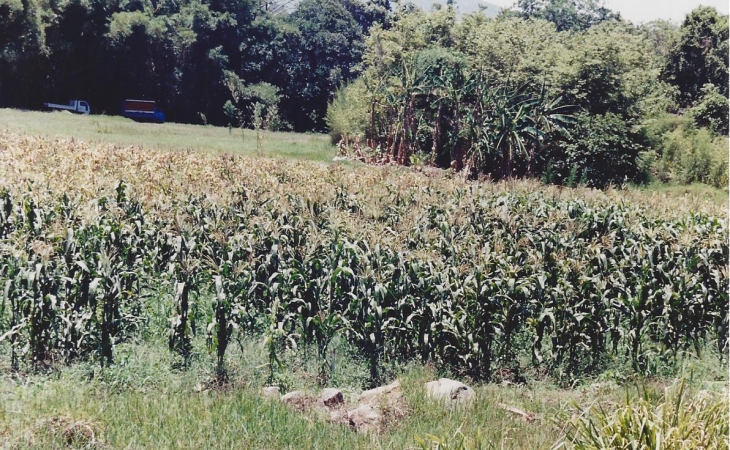Ultraviolet radiation from the sun can cause damage to the deoxyribonucleic acid (DNA) of plants. As plants cannot move to take shelter from the sun, they have developed complex mechanisms to protect themselves from ultraviolet radiation.

Researchers from the Fabio Baudrit-Moreno Agricultural Experimental Station (EEAFBM) of the University of Costa Rica study the mechanism by which corn plants are protected from radiation.
The damage that radiation generates in plant DNA is known in English as Double Strand Breaks (DSBs), and it affects cell division and growth, which in turn decreases crop yields.
For this reason, at the Fabio Baudrit Moreno Agricultural Experimental Station (EEAFBM) of the University of Costa Rica (UCR), the mechanism by which corn plants are protected from radiation is under study.
The project proposes the hypothesis that there are differences in the tolerance to ultraviolet radiation between tropical maize lines and those of the United States of America and Europe.
For the experiments, 26 corn lines are being used, mostly originating in the Mexican highlands, because it is thought that higher altitude varieties have greater tolerance. However, other Costa Rican and American lines are also studied.
According to the project's main investigator, Dr. Pablo Bolaños -Villegas, for the time being, the protocols are worked on to simulate in the laboratory the radiation doses received by the plants in the field.
He explained that “this is achieved through the use of radiation from gamma-ray sources, as well as chemical reagents such as zeocin. Once this step is completed, we will proceed to observe the differences in the development and growth of the different lines before exposure to radiation. Next, we intend to observe and quantify, in the highlighted lines, the expression of certain genes that have a determining role in DNA repair.”
On possible applications, Dr. Bolaños said that the results of the research may be used to conduct crossings between the tolerant lines and commercial varieties in order to give them a greater tolerance to ultraviolet radiation.
He stressed that this is particularly important if one considers the imminent increase expected in ultraviolet radiation due to the thinning of the ozone layer and other phenomena, such as the reduction of cloudiness in the tropics resulting from climate change.
According to Dr. Bolaños, this project was chosen by the Cold Spring Harbor Laboratories in New York, Asian subsidiary, to participate in the Congress on Cell Biology and Plant Development (Conference on Plant Cell & Development Biology http://csh-asia.org/2017meetings/plant.html) which took place in May 2017 in the city of Suzhou, China.
In addition to publicizing the project at an international level, during the symposium, strategic alliances were established with distinguished scientists such as Dr. Xuemei Chan from the University of California at Riverside and Dr. Hong Ma from the State University of Pennsylvania, both in the United States of America (USA).
On this he stated that “with both we are exploring the possibility of using the equipment of their laboratories to perform large-scale sequencing of Ribonucleic Acid (RNA) which would allow to identify the mechanisms that regulate tolerance to DNA damage with greater precision.”
The project is registered with the UCR Vice-Rectory for Research and it obtained funding from the Special Fund for Research Stimulation of that Office.
Congress participation expenses for Dr. Bolaños were borne 90% by the Rectory of the University of Costa Rica.
For his part, the student Sergio Castro, who also participates in the research project, received resources from the Supplementary Support Fund by the Vice-Rectory for Student Affairs, which covered 40% of the costs of his participation.
Engineer Nevio Bonilla of the National Institute for Innovation and Transfer in Agricultural Technology (INTA) contributed to import the seed.
Dr. Pablo Bolaños-Villegas’ presentation is available on line at the website: http://theleadingstrand.cshl.edu/meeting/media/59293.
To access it, pre-registration is required through the Cold Spring Harbor laboratory website, free of charge.
For more information, contact Dr. Pablo Bolaños -Villegas through his email: pablo.bolanosvillegas@ucr.ac.cr and phone (506) 2511-7758.

Participation of Professor Pablo Bolaños-Villegas (second from left to right) and student Sergio Castro-Pacheco (fourth left to right) in the poster exhibition session held during the Congress of Cell Biology and Plant Development, Suzhou, China, May 2017.